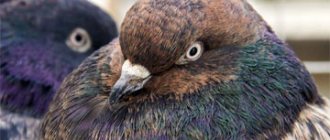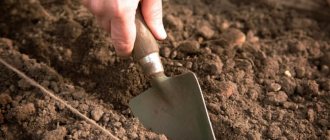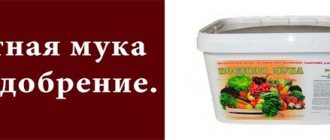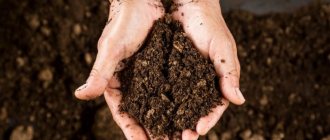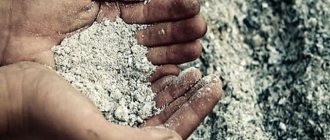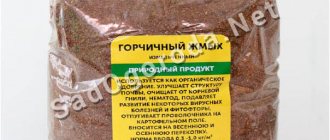Composition of chicken manure as fertilizer
Chicken manure contains a complex of substances that promote the full development of crops. It is noteworthy that in fresh excrement the bulk of the elements are organic, which makes bird manure one of the leaders in fertilizers.
The nitrogen content is ~1.6% - the volume depends on the age of the animal and growing conditions. In view of this, 50% of the litter is taken from chickens, since they have to walk on the grass. Fresh excrement also contains ~1.5% phosphorus and 0.9% potassium. Complements the complex:
- iron;
- manganese;
- copper;
- zinc;
- and other.
Note: the use of kuryak is important in fresh form, since up to 40% of useful enzymes evaporate with loss of moisture. However, during the preparation process, the dosage should be taken into account due to the content of humic acids.
Advantages and disadvantages of fertilizing with chicken manure
Using bird droppings as fertilizer is an effective natural fertilizer. Organic matter helps replenish micro- and macroelements in the soil, which feed vegetable crops. In addition, humus restores soil fertility.
This is what chicken poop looks like
However, if prepared incorrectly, chicken manure can cause the following problems:
- increasing the level of nitrates in the crop;
- plant disease due to burn of the root system;
- death of seedlings, seeds and mature plants;
- loss of soil fertility for 2-3 years.
In view of this, it is necessary to observe the exact dosages and order of fertilizing.
Please note: bird excrement is used as fertilizer for all crops, with the exception of those species that prefer sandy soil. This is due to slow metabolism, in which even a small volume leads to intoxication.
What plants can be fertilized
Chicken manure is ideal for fertilizing many garden and vegetable crops: potatoes, tomatoes, eggplants, onions, garlic, strawberries, fruit trees, flowers, etc.
- onions, garlic and other greens can be fed several times throughout almost the entire season, with the exception of the period of active growth of these plants, with litter (3.5 kg/sq. m) or without litter (2 kg/kg. m) manure;
- white cabbage can be fed with both litter (3 kg/sq. m) and non-litter (3 kg/sq. m) chicken manure; after the main feeding, you can then apply 2-3 additional ones, 1 liter per plant;
- pumpkins and tomatoes are fed in early spring with litter (6 kg/sq. m) or non-litter (4 kg/sq. m) fertilizer. Further fertilizing is carried out at the rate of 5 l/sq. m;
- Strawberries are fertilized in the spring, 4 months before planting - this will protect the root system from the negative effects of methane and ammonia. It is recommended to feed strawberries with chicken droppings for 3-4 years in a row;
- Root crops are fertilized in the fall: with litter (3 kg/sq. m) or without litter (2 kg/sq. m) manure. During the growing season, you can apply liquid fertilizer at the rate of 4 l/sq. m;
- potatoes are fed only in the fall and only with bedding manure - 4 kg/sq. m; Chicken manure cannot be used during crop growth.
During the gardening season, fertilizing should be applied carefully - excessive amounts lead to the accumulation of nitrates in the leaves.
Fertilizing azaleas, camellias, heathers and blueberries is not allowed; these plants do not tolerate high levels of sodium salts contained in the droppings.
Rules for using kuryak
The concentration of microelements in kuryak has no analogues with other types of litter. However, this also has a downside - the need to maintain proportions. Otherwise, use undiluted can destroy the roots of vegetable and fruit crops.
In the form of litter
In plant growing, litter is a source of useful substances. For preparation, poultry owners use straw, hay, peat and other plants. Wood ash is suitable as an additive. It is better not to use sawdust, because they are not suitable for fertilizing the soil.
Traditionally, the litter is used for composting or used to fertilize the following crops:
- berry bushes - mulching;
- fruit trees - sprinkling in the trunk circle;
- application under pumpkins, watermelons, melons and cucumbers.
When fresh, it is diluted in half with soil and added to the beds before frost. Despite the presence of a mixture of manure and organic matter in the litter, it is prohibited to apply it to the bare root system.
Applying fresh manure
Despite the restrictions on the use of fresh poultry manure to fertilize vegetable and fruit crops, fertilizing is also applied in this form. However, the work takes into account that the product is a concentrate. To prepare the composition, the dosage should be less, namely: 100 g is allowed per 1 m2. fresh litter or 2/3 dry.
To ensure even distribution over the site, excrement is mixed with sand, wood ash, peat and other organic substances. When diluting components, the benefits for a specific crop are taken into account.
Note: chicken manure should be used with garden soil carefully. The optimal ratio is 1 to 1.
Liquid feed recipe
To prepare liquid fertilizer, chicken manure must be diluted with water. Among agronomists there is no consensus on the proportions - from 1 to 10 to 1 to 20. The exact dosage depends on the type of soil and crop.
Liquid chicken feed
Recipe for liquid fertilizer with chicken manure:
- Dissolve excrement in clean water in a ratio of 1 to 10 to 1 to 20 - depending on the crop and purpose of use. Mix the composition. The color of the product should resemble a weak infusion of black tea.
- Leave the mixture in a dark place for no more than two days.
- Shake the product when ready.
- Dilute with water in a ratio of 1 to 5. If you plan to water with fertilizing, then the fertilizer is made at the rate of 1 bucket per 3 m2 of garden.
Liquid concentrated fertilizer must be diluted with water. To avoid harm to crops, as well as to stimulate their development, 200 grams are allowed per 5 liters. infusion.
Note: clay soil is fertilized in the fall by adding humus between the rows.
Preparing humus from poultry droppings
A simple way to prepare poultry manure is to humus it in a compost heap. Weeds, hay, straw, peat and droppings are laid in the pit layer by layer. Combination with horse, pig and other types of manure is allowed. The layers are laid at a height of 20-30 cm. If necessary, the compost is moistened. Covered with plastic film to maintain humidity and temperature. After 4-5 months. humus is ready for fertilizer.
Dosage and timing of application
When making chicken manure as a fertilizer, you must adhere to the proportions of infusion and water. If there is a lot of the last component, then feeding will not bring the expected result. If there is a lack of moisture, the solution will burn the roots. The tincture is diluted per 1 liter of water depending on its condition and further use.
Chicken droppings in a pack
The table shows the rules for applying chicken manure to fertilize the soil:
| Time and method of use | 1 liter of water per liter of partially rotted product | 1 liter of water per liter of completely rotted composition |
| In autumn after harvest before fallow | 5-10 | |
| Spring watering under fallow | 5-30 | 5-20 |
| Before planting seedlings | 100-150 | 10-30 |
| Tilling the soil around the seedlings | ||
| Watering during the growing season | 50-100 | |
| Treatment during flowering | 150-200 | 50-80 |
| Watering when the crop is ripe | 200-300 | 100-150 |
| For mineral and nutritional deficiencies | 150-200 | 30-50 |
| Foliage treatment | 200-300 | 50-70 |
Note: to irrigate beds with liquid fertilizer, you can use a drainage pump designed to work with sewage. A hose is connected to the container with the liquid and liquid is supplied to the area through it.
Precautions when working with chicken manure
When working with dry raw materials, you should take certain precautions - in dry chicken droppings there are a lot of eggs of worms and helminths, so you should definitely use rubber gloves when working. When working with liquid concentrate, you should also wear rubber gloves and a mask - a respirator or, in extreme cases, gauze folded in several layers. This precaution is due to the high content of nitrogen in the droppings, which negatively affects the lungs and the entire human body.
Rules of use depending on the season
Chicken manure is used by agronomists to fertilize the land and increase its fertility. Natural fertilizer does not contain chemicals, but it must be applied with caution, since the concentrated composition promotes the formation of nitrates and burns the roots. The litter can be used both in spring and autumn.
in spring
Delivering fresh manure in the spring involves creating humus using a cold method. However, in the absence of such a possibility or urgent application from the droppings, fertilizing is done. The soil is treated with a substance soaked with a bacterial agent. This approach allows the composition to rot in 14 days in sunny weather or 21 days in cool weather.
Chicken manure is sold in various packages
A similar technology is used for feeding in the spring if there is stale, but not rotten, material. Agronomists recommend fertilizing a garden left fallow with fresh excrement manually, mechanically or using a hardware spreader.
Fresh manure can be used to warm up raised beds and a greenhouse. Prepared humus is applied to already planted crops or immediately before sowing. Use in soil mixtures for germinating seeds or seedlings promotes healthy plant development.
in autumn
Growth and metabolic processes in plants slow down in the fall, which is due to the protection of cells from upcoming frosts. In view of this, fertilizing the soil with humus is impractical, since the crops will not have time to absorb substances and microelements, and rains will wash out the necessary elements for nutrition from the fertilizer.
In winter, low air temperatures stop the decay process, so in early spring the composition of chicken droppings will not change, which will lead to damage to seeds and seedlings. Pre-treatment of the fertilizer with a bacterial preparation helps prevent the negative effects of fertilizing.
A positive effect from the application of poultry manure can be achieved by processing it with microorganisms and worms. Before the procedure, the soil is fertilized in the following ways:
- Using a partially rotted composition with bacterial treatment.
- The use of humus mixed with 1% fresh or 2% dry poultry droppings.
For gardens left fallow, it is better to apply vermicompost fresh in the fall. If sowing is planned on the beds, then the ground is treated with humus.
Note: to feed tomatoes with bird excrement, it is necessary to reduce the concentration of the substance by half. Violation of the dosage leads to the death of seedlings due to the high nitrogen content.
In the greenhouse
The fundamental difference between a greenhouse and open ground is the reduction of the conditional winter due to thermal insulation and heating. Underground heating delays the onset of cold weather, due to which seedlings are planted and seeds are sown 2 months earlier. Some greenhouses allow you to grow vegetables and herbs all year round. Therefore, instead of leaving the beds fallow, the soil is replaced.
In greenhouse conditions, the use of fertilizing using methods intended for open ground is prohibited. Manure used to warm the soil is not left for the next season, but is removed. This prevents the composition from rotting, given that it burns for no more than two months. In spring, the pit is filled with fresh humus.
It is noteworthy that it is not recommended to use even a partially rotted additive in a greenhouse, since ammonia continues to be released from it. If you use such a mass, then an accumulation of harmful substances will occur in the air. This inevitably leads to poisoning.
Storage methods
Regularly using bird droppings as fertilizer, you need to know how to properly store the substance in order to preserve all those beneficial nutritional components that were described above.
It is recommended to compost chicken manure with peat or straw so that the plant residues absorb the liquid that is released during the process of overheating. With this method, more nutrients are preserved and there is no loss of microelements.
There are storage methods:
- Cold, in which chicken waste is placed in a pile on a drainage layer of peat or soil in layers. They compact well. A layer of peat or soil on top to prevent evaporation. This method is considered the best and leads to the least nitrogen loss.
- Hot. Used for quick preparation of compost. The substances are folded without compaction so that there is free access of oxygen inside the pile. After burning the compost, all pathogens and weed seeds are destroyed. The disadvantage of this method is that it causes large losses of nutrients.
- Liquid. The main thing is to prevent nitrogen from escaping from the liquid. To do this, after preparing and stirring the slurry, close the barrel tightly with a lid.
Chicken manure in coated granules, according to reviews, is the most suitable storage method, but is not used in private households. The Orgavit trademark produces fertilizers in this form. Firstly, the specific smell disappears and bird droppings can be kept at home for indoor plants. Secondly, the shell of the granules dissolves only when it gets into the ground.
It is not recommended to store chicken manure outdoors: the humidity decreases, and with it the amount of nitrogen. Rains wash away the fertilizer and it begins to sour and ferment. Fermentation also removes nutrients needed by plants.
Birds whose droppings can be used to fertilize the soil
Quail manure is considered the most valuable of bird excrement, but it is not easy to find and purchase. The composition is similar to chicken droppings. However, the value of the material lies in the presence of substances that prevent the development of pathogenic microbes - worms. In addition, quail excrement restores the fertility of the land, accelerating the ripening of crops. It is almost impossible to purchase it in processed form.
You can use the droppings of other birds as fertilizer.
If you do not have access to quail or chicken manure, you can use humus from the following birds:
- Geese droppings are distinguished by valuable microelements and minerals in their composition - phosphorus, nitrogen, potassium, calcium, etc. Fertilizing accelerates the growth of crops. It is used fresh, as well as as an infusion or humus. Goose manure is considered a gentle and safe way to fertilize garden plants.
- Pigeon droppings contain large amounts of zinc, iron, manganese and copper. The nitrogen concentration is reduced in contrast to other analogues of bird excrement. Use only in a diluted state is allowed. Agronomists recommend purchasing material from healthy poultry breeders.
- Turkey manure is identical in composition and method of application to chicken manure.
It is recommended to apply bird excrement in the spring for light soil before plowing or planting seedlings. In the first case, the composition is prepared at the rate of 1 kg of material per 100 m2 of garden - distributed in an even layer. In the second option, the droppings must be mixed with hay and spread between the rows of beds.
Chicken manure is an effective organic fertilizer that should be used with extreme caution. Violation of proportions and incorrect application to the soil can cause more harm to crops than good.
X
